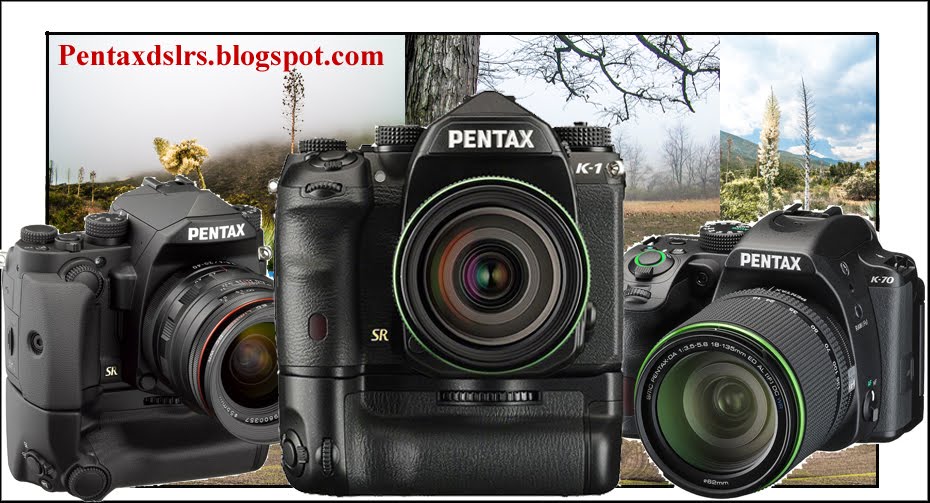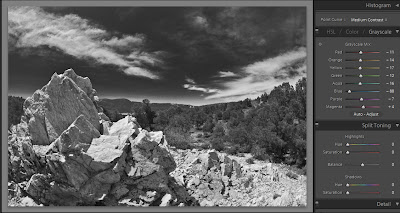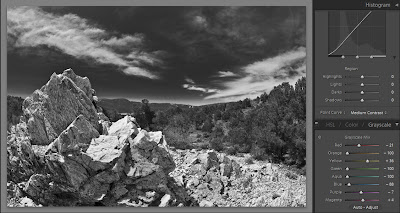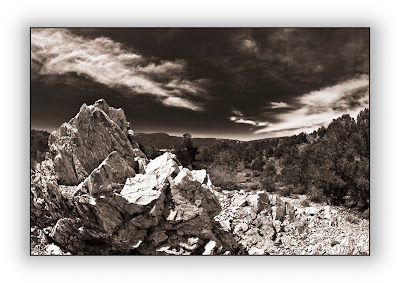 New Pentax K-2000
New Pentax K-2000 New smc PENTAX-DA* 60-250mm f/4 ED[IF] SDM Lens
New smc PENTAX-DA* 60-250mm f/4 ED[IF] SDM Lens New smc PENTAX-DA*55mm f/1.4 SDM Lens
New smc PENTAX-DA*55mm f/1.4 SDM Lens
 New smc PENTAX DA 15mm f/4 ED AL Limited
New smc PENTAX DA 15mm f/4 ED AL Limited
 New PENTAX DA 1.4X SDM Rear Converter
New PENTAX DA 1.4X SDM Rear Converter
New PENTAX AF160FC Auto Macro Ring Flash

Dear Pentaxian friends,
As promised, here are the new DSLR, Lenses, SMD-Tele-Extender and Ring Flash introduced by Pentax in Cologne, Germany. All of these will be exhibited at the Photokina 2008. In addition of the list below, Pentax USA has announced a new case for the Limited lenses as well as a new DSLR leather hand-strap.

Thank you for reading,
Yvon Bourque
---------------------------------------------------------------------------------
PENTAX ANNOUNCES K2000 DIGITAL SLR SYSTEM, TWO DA HIGH PERFORMANCE LENSES, AND RING FLASH
(From Pentax, Golden, Colorado, September 22, 2008)
PENTAX Imaging Company has announced the PENTAX K2000 DSLR system designed specifically for consumers who are ready to make the transition from a point-and-shoot digital camera to digital SLR photography. The PENTAX K2000 is an entry-level system consisting of the new PENTAX K2000 body, the smc PENTAX DA L 18-55mm f/3.5-5.6 AL lens, and the PENTAX AF200FG Auto Flash.
Bundled as a complete kit for the convenience of the customer, the PENTAX K2000 system offers uncomplicated operation for new digital SLR users and family photographers seeking high-quality digital SLR photography for the first time. Combining PENTAX developed, easy-to-use Auto Picture modes as well as powerful learning functions all housed in one of the smallest, lightest camera bodies in its class, the PENTAX K2000 system is ideal for digital SLR beginners. Additional features on the newest digital K2000 SLR body include a 10.2 megapixel CCD, a 2.7 inch, 230,000 dot high resolution, wide-view LCD panel, and an ultra compact design that facilitates one handed operation. The body also features the same PENTAX developed Shake Reduction technology found on more advanced K series digital SLRs. PENTAX Shake Reduction is compatible with more than 25 million PENTAX lenses to deliver sharp images even when handheld at slower shutter speeds. The K2000 also features the powerful PENTAX developed Auto Picture Mode, which selects from Portrait, Landscape, Macro, Action, and Night Portrait modes to tailor the camera settings for any photographic situation. The camera also has a comprehensive Dust Removal system to help keep images spotless. A dedicated programmable help button clearly explains current camera settings to guide and teach the user about digital SLR photography.
The lens included with the PENTAX K2000 system is the first of a new series introduced with the DA L designation. Along with the smc PENTAX DA L 18-55mm f/3.5-5.6 AL lens, PENTAX is announcing the smc PENTAX DA L 50-200mm f/4-5.6 ED zoom lens.* The affordable DA L series offers the same optical design, construction and compatibility as the current smc PENTAX DA 18-55mm II and smc PENTAX DA 50-200mm lenses. Also included with the system is the easy-to-use PENTAX AF200FG Auto Flash. This hot-shoe flash features a compact, lightweight body, wide angle diffuser, a guide number of 20 (at ISO 100/m) and simple dial operation to assure effortless flash photography for everyone.
*Note:The smc PENTAX DA L 18-55mm f/3.5-5.6 AL and smc PENTAX DA L 50-200mm f/4-5.6 ED lenses will only be available in the US as part of the PENTAX K2000 Lens Kit or PENTAX K2000 Double Zoom Kit. This new PENTAX digital SLR body will only be available under the PENTAX K2000 product name in the US. The same body will be available under the PENTAX K-m product name outside of the US.
PENTAX has also announced two high performance interchangeable lenses for use with PENTAX digital SLR cameras to deliver top-quality digital images. The smc PENTAX DA« 60-250mm f/4 ED[IF] SDM is a versatile telephoto zoom lens offering a high zoom ratio, while the smc PENTAX DA« 55mm f/1.4 SDM is a compact medium-telephoto lens offering a large maximum aperture. The two lenses are the newest members of the exclusive DA Star («) series, and each is designed to deliver top optical performance. Combining a host of advanced technologies including extra-low dispersion (ED) optical elements and PENTAX original lens coatings, these new lenses assure outstanding image quality with clear, high-contrast images, even at edges of the image field. These « lenses also feature water and dust resistant sealing for reliable operation in inclement weather conditions, as well as the PENTAX Quick-Shift Focus system to allow instant auto-to-manual focus switching. The objective lens surfaces are treated with the PENTAX original Super Protect (SP) coating. This special fluorine compound is applied to the lens surface through a vapor deposition process to create a surface that effectively repels dust, water and grease, making it easy to wipe off fingerprints and cosmetic marks. The combination of special lens coatings, ideal curvature and best positioning of optical elements assures these lenses are designed to optimize digital imaging characteristics, while effectively minimizing flare and ghosting. Additionally, the DA« 55mm f/1.4 lens also features a new Aero Bright coating for maximum light transmission, as well as rounded diaphragm blades to create a more circular aperture for smooth, beautiful bokeh at large apertures. The image circle of the lenses is perfectly proportioned to the image-sensor size of PENTAX digital SLR cameras, and despite the large maximum aperture, the lenses are designed to be compact and lightweight to enhance maneuverability and operability.
PENTAX also announced the PENTAX AF160FC Auto Macro Ring Flash. This accessory flash unit is uniquely suited for advanced close-up applications using the automatic exposure-control system of PENTAX digital SLR cameras. Designed to offer uniform lighting on a subject to minimize shadows, the flash is ideal for close-up, portrait, product, dental and medical applications.
All of these products will be exhibited at the PENTAX Booth during the Photokina 2008 Trade Show from September 23 – 28 in Cologne, Germany. Two additional products will be previewed under glass during the show including a fifth model in the acclaimed PENTAX DA Limited series. The smc PENTAX DA15mm f/4 ED AL Limited lens offers ultra-wide-angle image capture and is designed for exclusive use with PENTAX digital SLR cameras. This lens is scheduled to ship in Spring 2009 at a price to be announced. PENTAX will also preview the smc PENTAX DA 1.4X SDM Rear Converter. This is the first PENTAX rear converter equipped for autofocus operation on PENTAX digital SLR cameras, and the product will feature the SDM autofocus drive for accurate, extra-smooth, and super-quiet autofocus operation. Price and shipping information to be announced.
HOYA CORPORATION’s PENTAX Imaging Systems Division will exhibit all of these products* at Photokina from September 23 to 28 in Cologne, Germany. Available price and shipping dates of these products in the United States are as follows:
The PENTAX K2000 digital SLR system with smc PENTAX DA L 18-55mm f/3.5-5.6 AL lens and PENTAX AF200FG flash will ship in November 2008 at US $699.95.
The PENTAX K2000 digital SLR system with smc PENTAX DA L 18-55mm and smc PENTAX DA L 50-200mm lenses will ship in early 2009.
The smc PENTAX DA« 60-250mm f/4 ED[IF] SDM lens will ship in November 2008 at US $1499.95.
The smc PENTAX DA« 55mm f/1.4 SDM lens will ship in December 2008 at US $799.95.
The PENTAX AF160FC Ring Flash will ship in October 2008 at US $499.95.
The smc PENTAX DA 15mm f/4 ED AL Limited lens and 1.4X Rear Converter SDM price and shipping information are to be announced.
*Price and shipping date subject to change.
PENTAX K2000 Fact Sheet
Compact, lightweight body for enhanced portability and maneuverability.
Despite the large image sensor (23.5mm by 15.7mm), the PENTAX K2000 offers a compact, lightweight body to assure remarkable portability and maneuverability. The design incorporates a high-rigidity stainless-steel chassis, a more compact Shake Reduction mechanism and circuit boards, and the latest in high-density body component assembly to ensure efficient positioning and layout of various parts, including the repositioning of the battery compartment, to maximize ergonomics. The camera grip has also been redesigned for a firm, comfortable hold of the camera body.
Simplified ergonomics with dedicated Help button.
The PENTAX K2000 features a newly designed control system that positions most of the buttons and dials on the camera’s grip side making it easier to operate the camera with one hand. Additionally, a dedicated reprogrammable Help button displays camera functions on the camera’s LCD screen. This built-in user’s manual is ideal for those who are unfamiliar with digital SLR cameras.
PENTAX original Shake Reduction mechanism for sharp, blur-free images.
The PENTAX K2000 comes equipped with the PENTAX developed Shake Reduction (SR) * mechanism to reduce camera shake for sharp, blur-free images even under demanding shooting conditions - such as with telephoto lenses, in low light, at night without supplementary flash illumination and for extended exposures in sunset scenes. This innovative SR mechanism shifts the position of the image sensor vertically and horizontally at high speed using magnetic force, while adjusting the shifting speed in exact proportion to the amount of camera shake detected by a built-in sensor. SR offers an outstanding compensation effect up to the equivalent of approximately four shutter steps. As a result, the body does not require special anti-shake lenses and may be used with almost all existing PENTAX interchangeable lenses.
* Lenses compatible with this mechanism are: the PENTAX K-, KA-, KAF-, KAF2-, and KAF3-mount lenses; screw-mount lenses (with an adapter); and 645- and 67-system lenses (with an adapter). Some functions may not be applicable with certain lenses.
Comprehensive Dust Detection and Removal system.
The PENTAX K2000 features the user-friendly Dust Removal (DR) system to prevent dust from appearing on images. Applied to the CCD image sensor low pass filter surface through the vapor deposition process of a fluorine compound, the PENTAX developed original SP (Super Protect) coating effectively prevents dust from sticking to the sensor. For any stubborn dust that still remains on the surface, the SR system shifts the image sensor at high speed to shake off these particles. Finally, the dust that is shaken off the image sensor falls onto an adhesive sheet positioned at the bottom of the SR unit, eliminating any possibility of it returning to the image sensor surface. This DR system also offers a Dust Alert function, which allows the user to detect any placement of dust on the sensor in advance of cleaning operations.
Auto Picture and creative Scene modes
The PENTAX developed Auto Picture mode is programmed to automatically select the most appropriate shooting mode such as Portrait, Landscape, Action, Night Scene, Night Scene Portrait, and Macro for a given subject. Since all camera settings, including aperture, shutter speed, white balance, saturation, contrast and sharpness are then automatically adjusted by the camera for optimum results, users can concentrate on image composition rather than mode selection. For more unconventional subjects and environments, PENTAX also includes 10 creative scene modes. Combined, the K2000’s automatic modes offer users great flexibility as they explore digital SLR photography.
High-quality image.
The PENTAX K2000 combines a large, 10.2 megapixel sensor with the sophisticated PENTAX Real Image Engine (PRIME) as the imaging engine. This combination produces beautiful, detailed images with subtle gradations. The K2000 also features a Custom Image function, which offers a choice of six processing presets to give photographers high quality image processing flexibility.
High-speed continuous shooting at 3.5 frames per second.
The PENTAX K2000 allows users to shoot images up to approximately 3.5 frames per second (in the JPEG recording format), allowing photographers to capture fast action sequences with ease.
High-precision 5-point AF system.
The PENTAX K2000 incorporates a five-point, wide-area AF system (SAFOX VIII with five cross-type sensors) for dependable, high-precision autofocusing. Using the five sensors positioned in a cross pattern over the image field, this system automatically selects the optimum focus sensor for a given subject. Additionally, Center Focusing allows the photographer to enable only the centermost focus sensor. PENTAX engineers were also able to improve the focus speed under poor lighting conditions for improved autofocus performance overall.
Auto sensitivity control up to ISO 3200.
The PENTAX K2000’s auto sensitivity control function automatically sets the optimum sensitivity between ISO 100 and ISO 3200, based on such data as the subject brightness level and lens focal length. Since this allows the user to take advantage of faster shutter speeds in poor lighting situations (such as indoor sports events and night scenes), it helps the photographer to effectively reduce blur due to camera shake and subject movement.
Enhanced Dynamic Range and Shadow Adjustment Mode.
The K2000’s Enhanced Dynamic Range function allows the user to extend the dynamic range to prevent clipping in the highlight areas of the image. Additionally, Shadow Adjustment mode brings out detail in the darkest parts of the image. Combined, these functions help the user to produce beautiful, detailed images when shooting high-contrast subjects.
Large, easy-to-view 2.7 inch LCD monitor.
The PENTAX K2000 features a large 2.7 inch color LCD monitor with approximately 230,000 dots of resolution. This monitor’s wide-view design allows the photographer to check the on-screen image from approximately 160 degrees both vertically and horizontally and offers digital zooming of playback images up to 16X for easy confirmation of the image’s focus and subject details.
Bright, clear viewfinder.
With a lightweight penta-mirror prism and the acclaimed Natural-Bright-Matte focusing screen, the PENTAX K2000’s viewfinder delivers a large, bright image with an approximately 96 percent field of view and approximately 0.85X magnification.
Digital filters for unique visual expressions.
The PENTAX K2000’s built-in digital filters allow users to effortlessly add creative and artistic touches to recorded images without the use of a PC. Users may select one of 14 different digital filters including the new Toy Camera and Retro filters to create the desired visual effect.
Additional Features.
Energy-efficient power supply, recording approximately 1,650 images with four AA-size lithium batteries (included)
Status screen, displaying camera settings on the LCD monitor for at-a-glance confirmation
Index function, for five different types of display and printing mode
Choice of 16-segment multi-pattern metering, center-weighted metering and spot metering to accommodate various photographic applications
Simultaneous recording of RAW and JPEG format images
Compatibility with SD and SDHC memory cards
In-body development of RAW images
Compatibility with SDM autofocus lenses for quiet, smooth focus operation
PENTAX PHOTO Laboratory 3 RAW data processing software and PENTAX PHOTO
Browser 3 browser software included
PENTAX new Lenses Fact Sheet
smc PENTAX-DA L 18-55mm f/3.5-5.6 AL Lens
A compact standard zoom lens with focal lengths from 27.5mm to 84.5mm (in the 35mm format) covering wide-angle to medium-telephoto ranges.
Latest optical design featuring a high-performance aspherical lens element to minimize aberrations
smc PENTAX-DA L 50-200mm f/4-5.6 ED Lens
A super-compact, ultra-lightweight telephoto zoom lens with focal lengths from 76.5mm to 307mm (in the 35mm format).
ED (Extra-low Dispersion) glass optical element to minimize chromatic aberrations over the entire zoom range and overall enhanced optical performance.
smc PENTAX-DA* 60-250mm f/4 ED[IF] SDM Lens
When mounted on a PENTAX digital SLR camera body, this zoom lens provides focal lengths from 92mm to 383mm in the 35mm format. The 4.2X zoom ratio covers a broad telephoto range, making it ideal for capturing sporting events and portraits.
Two extra-low dispersion (ED) optical elements are incorporated into the lens to minimize chromatic aberrations. A unique nonlinear shifting system in the zoom mechanism effectively reduces field curvature aberrations and assures outstanding optical performance at all focal lengths.
The large F4 maximum aperture is consistent over the entire zoom range for faster shutter speeds and flexible the depth of field control.
An innovative hybrid AF system offers both extra-smooth, super-quiet SDM autofocus operation using a supersonic motor installed in the lens body, and conventional autofocus operation using a motor built into the camera body.
smc PENTAX-DA*55mm f/1.4 SDM Lens
When mounted on a PENTAX digital SLR camera body, this medium-telephoto lens offers a focal length of 80mm in the 35mm format. Coupled with its large F1.4 maximum aperture, it is ideal for portraiture applications.
A newly developed Aero Bright Coating enhances lens performance by ef/fectively reducing reflections over a wider wavelength range. Compared to conventional multi-coatings, this new coating greatly improves light transmittance through the lens, while drastically reducing flare and ghosting that deteriorate image quality.
Rounded diaphragm blades create a more circular aperture for smooth, beautiful bokeh at large aperture settings.
The advanced SDM mechanism assures extra-smooth, super-quiet autofocus operation using a supersonic motor installed in the lens body. With an SDM exclusive autofocus system, the lens is designed to be quite compact, despite its large maximum aperture.
Lens Specifications
 PENTAX AF160FC Ring Flash
PENTAX AF160FC Ring FlashP-TTL auto flash system to constantly assure the proper exposure level, by measuring the flash’s pre-discharge with the camera’s image sensors and assessing the subject’s lighting condition with the camera’s multi-pattern metering system.
Maximum guide number of 16 (at ISO 100/m).
User-friendly operation with a single control dial on the back panel to simplify flash-mode changes and discharge-level adjustments.
Advanced flash applications, including contrast-control auto flash and independent switching of two flash bulbs.
Uniform lighting on the subject to minimize shadows, making it ideal for close-up, portrait, product, dental and medical applications.
Main Specifications
 All other brands or product names are trademarks or registered trademarks of their respective companies. Designs and specifications are subject to change without notice.
All other brands or product names are trademarks or registered trademarks of their respective companies. Designs and specifications are subject to change without notice.
 Thanks for reading, and go ahead and shoot RAW files.
Thanks for reading, and go ahead and shoot RAW files.

















 New Pentax K-2000
New Pentax K-2000

 New smc PENTAX DA 15mm f/4 ED AL Limited
New smc PENTAX DA 15mm f/4 ED AL Limited New PENTAX DA 1.4X SDM Rear Converter
New PENTAX DA 1.4X SDM Rear Converter Dear Pentaxian friends,
Dear Pentaxian friends,

 PENTAX AF160FC Ring Flash
PENTAX AF160FC Ring Flash All other brands or product names are trademarks or registered trademarks of their respective companies. Designs and specifications are subject to change without notice.
All other brands or product names are trademarks or registered trademarks of their respective companies. Designs and specifications are subject to change without notice.
 ABOVE: This is the original file in color taken with the K20D and the DA 16-45mm as I recall.
ABOVE: This is the original file in color taken with the K20D and the DA 16-45mm as I recall. 

 ABOVE: I usually add clarity and vibrance to the image before turning it to grayscale. When the Clarity and Vibrance are to my taste, I change the image to Grayscale.
ABOVE: I usually add clarity and vibrance to the image before turning it to grayscale. When the Clarity and Vibrance are to my taste, I change the image to Grayscale.




 ABOVE: Th is the original image. Below is the B & W after processing.
ABOVE: Th is the original image. Below is the B & W after processing. 


















